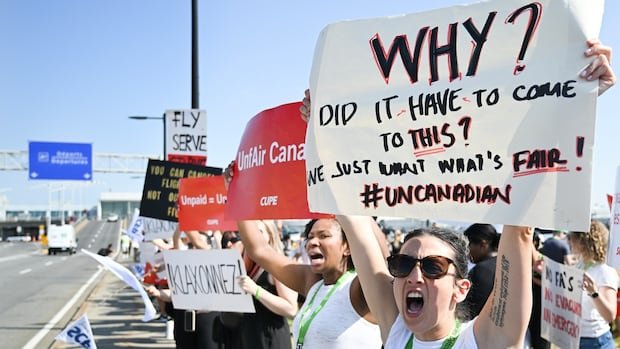Canada is witnessing a surge in labor strikes amidst challenges from tariffs and the ongoing affordability crisis impacting workers. Unions are cautioning of more forthcoming actions as they anticipate potential clashes with a federal government that has repeatedly intervened to end strikes.
Alisha Kang, president of the Union of National Employees, stated, “We are gearing up for the upcoming battle. The movement is tired of mere words.” Following the government’s interference to resolve notable strikes at ports, rail yards, and Canada Post, tensions escalated when Air Canada’s flight attendants defied Ottawa’s back-to-work order, risking penalties and imprisonment. However, a resolution was swiftly reached the following day.
Statistics Canada reports a notable increase in labor disputes not seen for decades, with 6.6 million days of work lost in 2023, the highest level since 1986. This spike in strikes has prompted the federal government to issue several back-to-work orders, invoking Section 107 of the Canada Labour Code to maintain “industrial peace.”
The Canadian Labor Congress, representing over three million unionized workers, highlighted the growing willingness among workers to support strike actions. This trend is fueled by job losses due to trade conflicts, challenges for young job seekers, and the rising cost of living, leading to decreased trust in governments and institutions to address their concerns effectively.
Experts emphasize the impact of declining job quality, security, and the widening wage-cost gap exacerbated by the pandemic. The defiance by Air Canada flight attendants against the back-to-work order has set a new tone for labor disputes, challenging both employers and the government to seek alternative solutions.
Jobs Minister Patty Hajdu defended the government’s intervention in labor disputes, emphasizing the need to balance workers’ rights and economic stability. Despite recent legislative changes benefiting unions, the diminishing influence of traditional labor advocates in Parliament, particularly the NDP, poses challenges for advancing workers’ interests in the current political landscape.
In conclusion, the labor landscape in Canada is evolving rapidly, driven by economic pressures and shifting dynamics between workers, unions, and the government.


